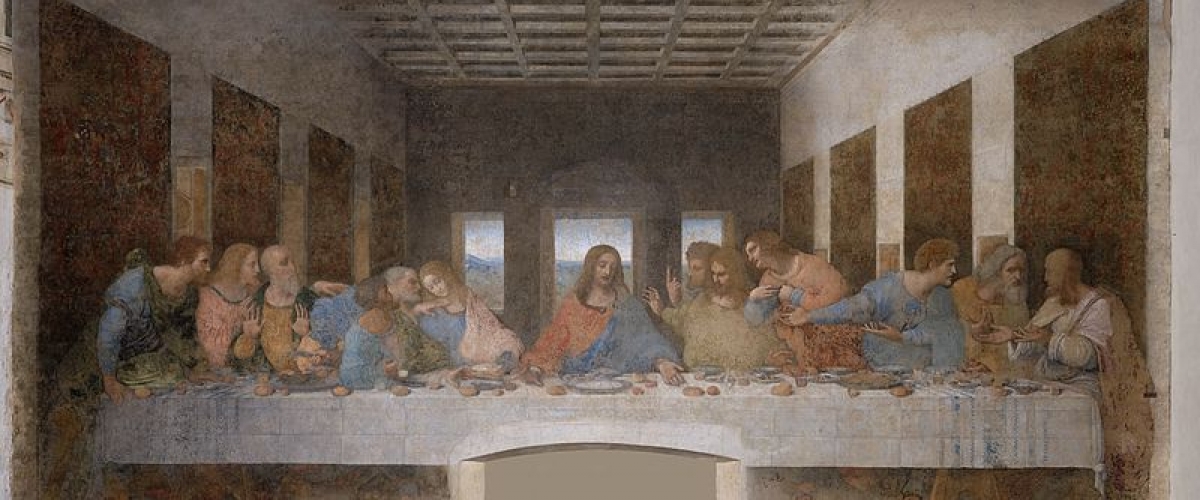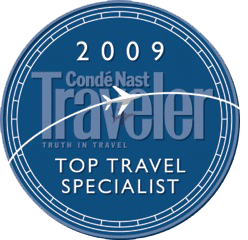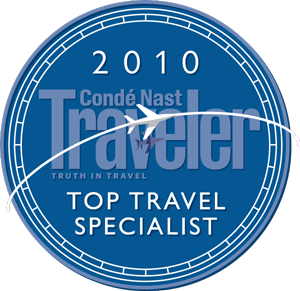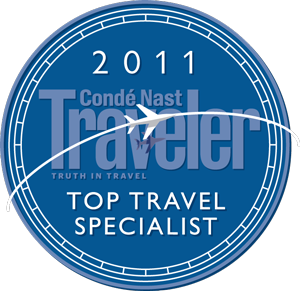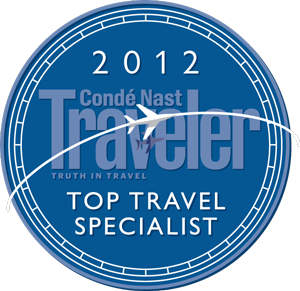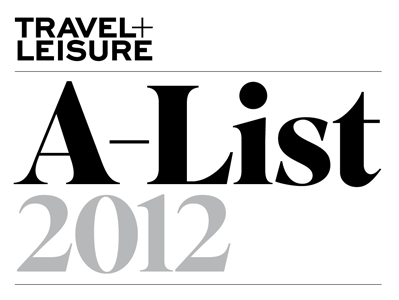While the region of Lombardy, where Milan is located, actually has some of the most UNESCO heritage sites of all Italian regions, the city of Milan has just one, but it is special enough to draw many visitors to the city who wouldn’t visit otherwise.
Joyce Falcone
Joyce Falcone has not set their biography yet

Italy may be known for style and excellence with most of its major brands—Ferrari, Prada, Alessi—but for decades, Alitalia, the national airline, has been somewhere between a laughing stock and a national embarrassment.
When Emirates started its route between Milan and New York, Italian business people were elated to have an appropriately refined option for important business trips. But now another swanky Middle Eastern airline has thrown its hat in the ring: Etihad.
If you're trying to figure out when is a good time to visit Italy, the truth is, in a country with cultural and history as varied in Italy, there's always something being celebrated!
Each season has its own charms in terms of food and scenery, but the Italians have cultural and food festivals and holidays with processions, presentations and plenty of pomp and circumstance throughout the year as well.
Here's our month-by-month guide to the many of the most notable events in Italy.
There are, however, truly too many things to list here, so if you're interested in something particular, like summer opera festivals, get in touch, and I can let you know some picks tailored to your interests.
January 1: New Year’s Day
January 6: Epiphany
January: Pitti Imagine fashion conventions, Florence
January 31–February 17: Carnevale, Venice and Viareggio are notable destinations, but there are celebrations everywhere
February 5: Saint Agatha's Feast Day, celebrated in Catania, Sicily, with the second largest religious procession in the world
February 17: Mardi Gras
March 8: La Festa della Donna, women’s day
March 22–25: Vititaly wine festival in Verona
April 6: Easter Sunday
April 7: Easter Monday, Pasquetta, a day for picnicking and enjoying spring
April 25: Italian Liberation Day
May 1: May Day/Labor Day (closures)
May 1: Expo Milano begins
May 1: Feast of Sant Efisio, Sardinia’s most important festival stretching over four days
May 9-November 22: Biennale in Venice
May 24-26: Florence Artisan Gelato Festival Gelato Festival, Florence
May 9-31: Giro d’Italia bike race, Italy’s version of the Tour de France
June 2: Festa della Repubblica, major national holiday with large presentations in Rome
June 24: Day of St. John the Baptist, patron saint of Florence
June–August: Outdoor opera season
July 2: First Siena Palio
August 15: Feast of the Assumption or Ferragosoto, the biggest holiday in Italy when everyone flees the city for the beach
August 16: Second Siena Palio
September 2-12: Venice International Film Festival
September 19: Feast of San Gennaro, most important religious holiday in Naples
October 6-November 18 (weekends only) – White Truffle Festival in Alba
October 16-25: EuroChocolate festival in Perugia
November 2-11: CioccolaTO chocolate festival in Torino
December 25: Christmas
December 26: St. Stephen’s Day
Each season has its own charms in terms of food and scenery, but the Italians have cultural and food festivals and holidays with processions, presentations and plenty of pomp and circumstance throughout the year as well.
Here's our month-by-month guide to the many of the most notable events in Italy.
There are, however, truly too many things to list here, so if you're interested in something particular, like summer opera festivals, get in touch, and I can let you know some picks tailored to your interests.
January
January 1: New Year’s Day
January 6: Epiphany
January: Pitti Imagine fashion conventions, Florence
January 31–February 17: Carnevale, Venice and Viareggio are notable destinations, but there are celebrations everywhere
February
February 5: Saint Agatha's Feast Day, celebrated in Catania, Sicily, with the second largest religious procession in the world
February 17: Mardi Gras
March
March 8: La Festa della Donna, women’s day
March 22–25: Vititaly wine festival in Verona
April
April 6: Easter Sunday
April 7: Easter Monday, Pasquetta, a day for picnicking and enjoying spring
April 25: Italian Liberation Day
May
May 1: May Day/Labor Day (closures)
May 1: Expo Milano begins
May 1: Feast of Sant Efisio, Sardinia’s most important festival stretching over four days
May 9-November 22: Biennale in Venice
May 24-26: Florence Artisan Gelato Festival Gelato Festival, Florence
May 9-31: Giro d’Italia bike race, Italy’s version of the Tour de France
June
June 2: Festa della Repubblica, major national holiday with large presentations in Rome
June 24: Day of St. John the Baptist, patron saint of Florence
July
June–August: Outdoor opera season
July 2: First Siena Palio
August
August 15: Feast of the Assumption or Ferragosoto, the biggest holiday in Italy when everyone flees the city for the beach
August 16: Second Siena Palio
September
September 2-12: Venice International Film Festival
September 19: Feast of San Gennaro, most important religious holiday in Naples
October
October 6-November 18 (weekends only) – White Truffle Festival in Alba
October 16-25: EuroChocolate festival in Perugia
November
November 2-11: CioccolaTO chocolate festival in Torino
December
December 25: Christmas
December 26: St. Stephen’s Day
Italy may have the most UNESCO sites in the world, but the Tuscany alone has more than many countries.
UNESCO sites in Tuscany fall into two main categories:
Many of these sites are on travelers' top, must-see lists for Tuscany: Florence, Siena and Pisa. Easily reached by train if you aren't renting a car, these three cities are the backbone of any first-time Italy or Tuscany itinerary.
It is little wonder these three cities are so noted today, as they have been the most crucial centers of commerce in the area since Roman times (in the case of Pisa) or early Medieval times in the case of Siena and Florence.
River trade fueled growth and striking marble construction in Pisa, while a prime location as the last major stopping point on the road between France and Rome poured money into the majestic central buildings of Siena, which continuously tried to steal Florence's status as the region's unofficial capital.
While these three cities have grown and modernized--as much as one can under UNESCO protection--in recent times, the remaining two Tuscan towns on the UNESCO heritage list are protected precisely because they maintain earlier styles of architecture that have been built-over or died out in other areas.
San Gimignano, known for its towers, represents how all Medieval villages once looked as noble families warred against one another from increasingly taller towers, while Pienza, a bit off the traditional tourist path, was built to depict the Renaissance ideal of what a city should be.
While everyone knows about the historic importance of Tuscany's architecture and the beauty of its countryside, the truth is that these two things are actually linked.
The most picturesque parts of the Tuscan countryside are so aesthetically pleasing because they were landscaped that way. In the case of the Val d'Orcia, one of my favorite parts of Italy, the agrarian countryside, villages, and country roads surrounding Siena were planned and designed to create the first example of what is now known as landscaping and civil engineering.
While the Val d’Orcia was reshaped throughout the early Renaissance, the concept of landscaping reached a new level with the 12 villas and two gardens of the Medici Villas and Gardens, built during the 15th to 17th centuries according to then new ideas of the integration of man and his environment.
UNESCO sites in Tuscany fall into two main categories:
- historic city centers
- man-improved landscapes
UNESCO-listed Historic City Centers in Tuscany
Many of these sites are on travelers' top, must-see lists for Tuscany: Florence, Siena and Pisa. Easily reached by train if you aren't renting a car, these three cities are the backbone of any first-time Italy or Tuscany itinerary.
It is little wonder these three cities are so noted today, as they have been the most crucial centers of commerce in the area since Roman times (in the case of Pisa) or early Medieval times in the case of Siena and Florence.
River trade fueled growth and striking marble construction in Pisa, while a prime location as the last major stopping point on the road between France and Rome poured money into the majestic central buildings of Siena, which continuously tried to steal Florence's status as the region's unofficial capital.
While these three cities have grown and modernized--as much as one can under UNESCO protection--in recent times, the remaining two Tuscan towns on the UNESCO heritage list are protected precisely because they maintain earlier styles of architecture that have been built-over or died out in other areas.
San Gimignano, known for its towers, represents how all Medieval villages once looked as noble families warred against one another from increasingly taller towers, while Pienza, a bit off the traditional tourist path, was built to depict the Renaissance ideal of what a city should be.
Man-Made Tuscan Landscapes on the UNESCO Heritage List
While everyone knows about the historic importance of Tuscany's architecture and the beauty of its countryside, the truth is that these two things are actually linked.
The most picturesque parts of the Tuscan countryside are so aesthetically pleasing because they were landscaped that way. In the case of the Val d'Orcia, one of my favorite parts of Italy, the agrarian countryside, villages, and country roads surrounding Siena were planned and designed to create the first example of what is now known as landscaping and civil engineering.
While the Val d’Orcia was reshaped throughout the early Renaissance, the concept of landscaping reached a new level with the 12 villas and two gardens of the Medici Villas and Gardens, built during the 15th to 17th centuries according to then new ideas of the integration of man and his environment.
When I saw a wonderfully tongue-in-check short documentary on Italian hand gestures in The New York Times, I couldn’t help but smile.
The topic of Italian hand gestures comes up in conversation so often: What are they? What do they mean? How many are there?
There are at least 250 Italian hand gestures throughout the country, and some scholar say that many gestures are used by the average Italian every day.
Many are recognizable throughout western civilization, such as scribbling in the air with an imaginary pen to get the waiter to bring the check or holding a cupped hand to your ear to indicate that you didn’t hear someone. Others are decidedly Italian, difficult for locals to explain to foreigners and confounding visitors ability to understand what’s going on.
Practice some of the most frequent gestures and you’ll fit right in in Italy:
A great way to learn Italian hand gestures is to watch Italian films (from home) or to people watch in a cafe (in Italy or if you're lucky enough to live in or near a city with a Littly Italy).
Hope this video brightened your holiday season!
Happy holidays,
Joyce
The topic of Italian hand gestures comes up in conversation so often: What are they? What do they mean? How many are there?
There are at least 250 Italian hand gestures throughout the country, and some scholar say that many gestures are used by the average Italian every day.
Many are recognizable throughout western civilization, such as scribbling in the air with an imaginary pen to get the waiter to bring the check or holding a cupped hand to your ear to indicate that you didn’t hear someone. Others are decidedly Italian, difficult for locals to explain to foreigners and confounding visitors ability to understand what’s going on.
Practice some of the most frequent gestures and you’ll fit right in in Italy:
- “What on earth?” pinch thumb to fingers and shake in front of you
- “Delicious!” point finger, touch cheek, and rotate back and forth
- “Ti prego!/Pleeeeeease” lock hands as if in prayer, hold against chest and shake slightly
- “What on earth are you talking about?” the reverse of ti prego; shake prayer hands slowly away from body
- “Occhio/beware” touch pointer finger below eye and pull down slightly
A great way to learn Italian hand gestures is to watch Italian films (from home) or to people watch in a cafe (in Italy or if you're lucky enough to live in or near a city with a Littly Italy).
Hope this video brightened your holiday season!
Happy holidays,
Joyce

